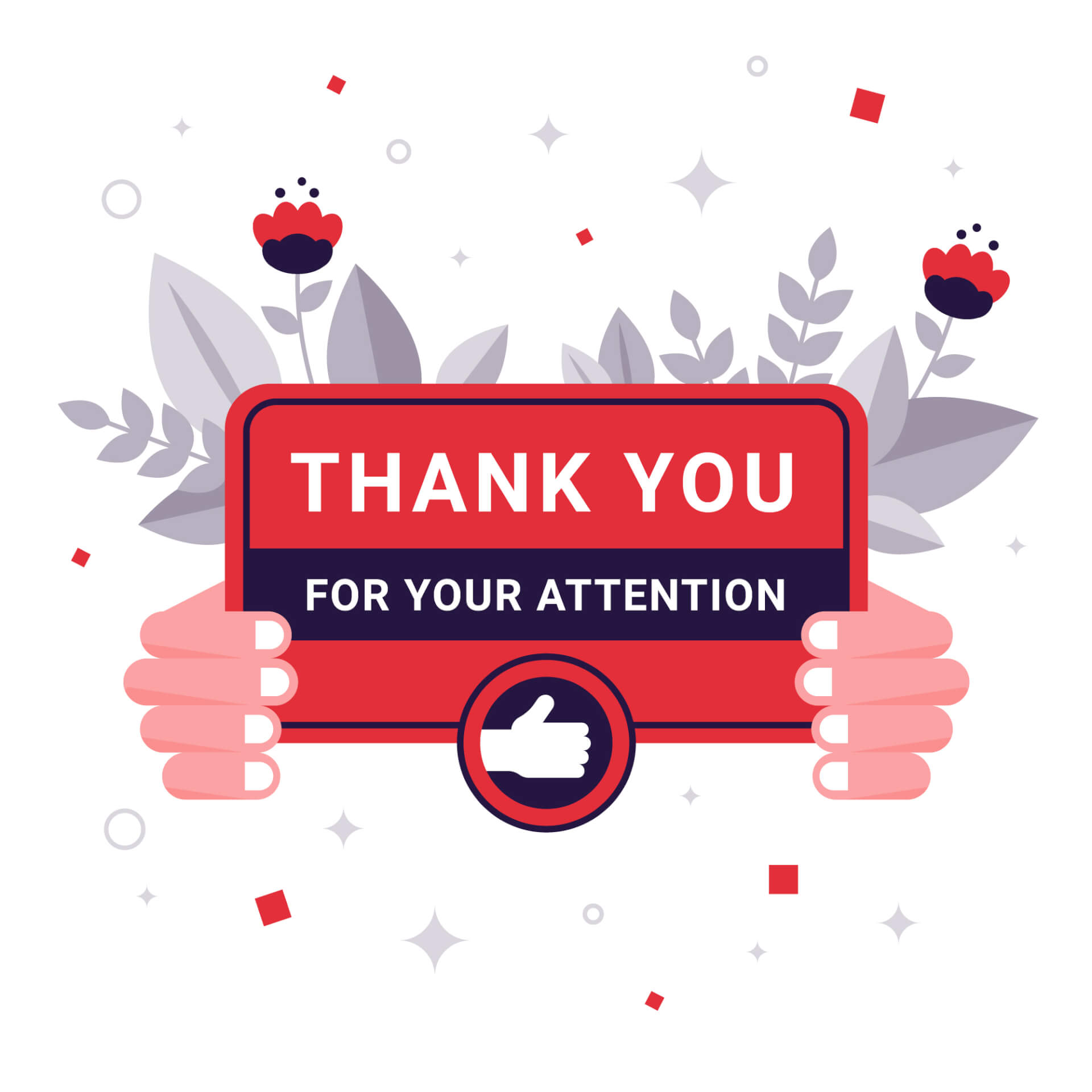The customer feedback loop shows the process of continuous improvement based on the customers' insights about the business they are interacting with.
It is one of the most efficient ways to make improvements according to customer needs. Listening to what customers have to say is essential as the answers sought form the core of customer sentiment.
An easy way to close the customer feedback loop is to ask open-ended questions and explain how you would like to respond to the valuable information your customers are sharing. This will confirm that you understand their weaknesses and continue to strive to make their business successful. You should also let your customers know that the changes they requested have been implemented and the issues have been resolved.
 Only if you commit to taking the feedback received seriously can your company stand out from the competition and turn your critics into promoters, passives into committed customers and promoters into supporters of your brand.
Only if you commit to taking the feedback received seriously can your company stand out from the competition and turn your critics into promoters, passives into committed customers and promoters into supporters of your brand.
In the following lines we will analyze each NPS segment and outline the best practices for handling it.
Table of Contents
Promoters: show gratitude
 Promoters are your happiest, most loyal customers. But they're not just loyal - they're committed to your company or brand. You probably already know her by name and have a personal relationship. You have likely already provided testimonials, acted as a reference, written an online review, or introduced your brand to friends and acquaintances.
Promoters are your happiest, most loyal customers. But they're not just loyal - they're committed to your company or brand. You probably already know her by name and have a personal relationship. You have likely already provided testimonials, acted as a reference, written an online review, or introduced your brand to friends and acquaintances.
While promoters are certainly your ideal customer segment, most companies make the mistake of taking them for granted. They make little or no effort to estimate their most profitable customer segment. In doing so, they miss out on valuable insights into what moves their product and how they can use it for future growth.
The truth, however, is that promoting your promoters and being grateful for their feedback can go a long way in strengthening future relationships and improving sales growth.
Here's how to close the feedback loop with promoters:
- Give rewards: Send personalized thank you notes, branded items, or a promotional badge to share on social media. The idea is to make them feel good about the brand and show them that they are valued.
- Ask for Referrals: Since organizers would love to recommend your brand to their friends, you can ask them to sign up for your referral campaign. To sweeten the effort, you can, for example, offer them credits for every successful recommendation that became a new customer.
- Offer personalized upgrades: Since promoters are less price sensitive, they are the perfect segment for upselling or cross-selling your products or services. Rather than randomly suggesting an upgrade, you can track their usage history to identify the upgrades they're most interested in and show them the potential cost benefits.
By closing the loop with promoters in particular, you affirm and reinforce their positive feelings about your brand and prove that their feedback is critical to your success.
Passive: get involved before they migrate
 The two extreme ends of the NPS range, promoters and critics, seem pretty straightforward to work with.
The two extreme ends of the NPS range, promoters and critics, seem pretty straightforward to work with.
Passives fall into a special customer segment. These customers are satisfied but not enthusiastic about your product. They don't love your product, but neither do they hate it. This makes them particularly vulnerable to competition.
Often times, they see a need for your type of product, but are not convinced that your company has the best deal. It's almost like they're waiting for something good or bad to happen before they can make a final decision. This is an excellent opportunity to surprise and delight them.
Since passives don't usually give indefinite feedback, it becomes difficult to close the circle with them. For example, according to a 2014 study, an average of only 37% of passives shared some form of feedback, compared to 50% critics and 55% promoters.
While it may seem like passives do less damage to your brand, the truth is that critics and passives churn almost equally. While critics take decisive action, passives wait for a good competitive opportunity to make the switch. They may hold on to the brand longer, but if ignored it's almost certain that they would churn.
To close the customer feedback loop with passives, here's what you should do:
- Offer them discounts or upgrades: Passives can be reactivated with inexpensive upgrades or exclusive discounts on long-term subscriptions. The idea is to significantly lower the emigration threshold.
- Send them product guides: Passives may not take the time to look at your product because of a misleading first impression. You were dissatisfied with your product and never came back to check out your incremental updates. You can reactivate them by regularly sending product update newsletters.
Critics: surprise them.
 There is nothing more daunting than accessing your Net Promoter Score platform to find that your NPS score is not as expected.
There is nothing more daunting than accessing your Net Promoter Score platform to find that your NPS score is not as expected.
Dealing with unhappy customers is an uncomfortable part of the job, but it has never been more necessary. Changing a customer's mind after the damage has been done is definitely a challenge. When reaching out to your critics, you should be transparent about where you've made a mistake in the past and how you plan to fix it.
On average, 70% of customers would work with the business partner again if a complaint had been resolved in their favor. The purpose of closing the customer feedback loop with critics is to build trust with those customers and show them that you care.
Most companies make the mistake of viewing critics as customers who cannot be retuned because they despise the entire product experience. But that's just not true. In fact, the customers who cancel free trials or leave negative feedback are future promoters who want your solution to work for them. But for some reason it doesn't give satisfactory results. The best way to turn them back on is to send a personalized email and ask them about the problems they are facing and how you can resolve them.
You can also ask open-ended questions, such as the following, to gain important insights into customer vulnerabilities:
- Which functions did you miss that meant that you no longer use our product?
- Could you outline the ideal solution that would work for you?
- If you had a wand, what would the first thing you would do to improve our product?
You can even give them a call and listen to the points directly. According to many studies, the most common improvement customers want is “better and more humane service”.
The whole idea is to improve your brand's perception by proactively asking about their problems and finding a solution that works for them.
So you could follow up on the e-mail response and offer a solution to the problem described:
- Share a guide if you already have the requested role.
- Extend the free trial and grant access to premium features.
- Suggest a third-party service that works for them, even if you don't offer it yourself.
By proactively finding solutions to customer problems and improving their experience, you will turn critics into promoters who are comfortable with being mentored.
Without feedback: get in touch
 While most companies create a framework to close the customer feedback loop for the above three segments - Promoters, Passives, and Critics - they completely overlook their largest customer segment: Respondents with no feedback.
While most companies create a framework to close the customer feedback loop for the above three segments - Promoters, Passives, and Critics - they completely overlook their largest customer segment: Respondents with no feedback.
Given that the NPS response rate averages 20 to 40%, it's pretty safe that any company would have at least 60% unanswered surveys. The surprising finding, based on a case study, is that customers who do not respond to the survey churn the most, even more than passives or critics.
In fact, companies have a better chance of revisiting a critic than convincing a customer who doesn't respond to the survey. If this is neglected, some of these customers will usually churn within the next 6 months.
Basically, the only way to re-involve this customer segment is to treat them the same as you would treat critics and passives to break the ice.
Customers who don't answer you will not affect your NPS score, but they can certainly adversely affect your future growth and profitability.
Timing is everything
 Managing the gap between customer expectations and the solutions provided requires immediacy. Once you've told your customers that you want to get in touch, it is imperative that they hear from you. It is important to choose the right time for NPS surveys. Reply to customers in less than 24 hours after starting the NPS campaign. Otherwise, the probability of having a meaningful follow-up interview is zero. Plan to set aside some time each day to review and act on feedback immediately.
Managing the gap between customer expectations and the solutions provided requires immediacy. Once you've told your customers that you want to get in touch, it is imperative that they hear from you. It is important to choose the right time for NPS surveys. Reply to customers in less than 24 hours after starting the NPS campaign. Otherwise, the probability of having a meaningful follow-up interview is zero. Plan to set aside some time each day to review and act on feedback immediately.
Closing the customer feedback loop with an immediate response would also require the availability of enough staff to be able to handle the customer feedback received. With that in mind, you may want to throttle the number of polls you take each day so that you can process the results effectively.
Instead of surveying the entire customer base at the same time, you should divide them up into smaller groups. Submit your surveys daily for up to 3 or 6 months depending on the number of respondents. Remember, when asking for honest feedback, be ready to act on it.
Pay attention to the gap
The aim is to collect critical customer feedback and to use the received data for the benefit of the company. Many companies use the lessons learned to adjust their product roadmap, prevent churn, drive referrals, create targeted campaigns, and more.
Closing the customer feedback loop is one of the easiest ways to reinforce a positive experience or correct a negative one. Your customers want to know that their time and opinion is valued. There is nothing more frustrating than offering constructive criticism and never receiving feedback.
Understanding and responding to customer sentiment is an ongoing process. So make sure you keep pace with your consumers' needs and encourage their loyalty.

Recommended reading: If this article helped you and you would like to learn more about the role of NPS in shaping the customer experience, continue reading here: "The role of NPS in customer experience (CX)"